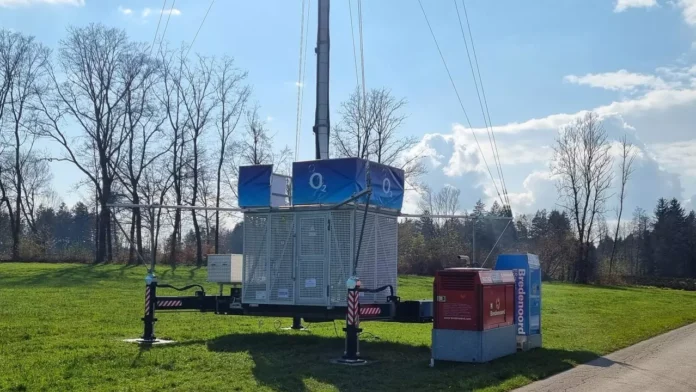Telefonica Germany said its 5G network had around 10,000 antennas in the country
German operator O2 Telefónica said it was ready to start operating 60 new mobile radio stations, enabling the carrier to provide its customers with additional 4G/2G capacities as well as 5G on 3.6 GHz on an as-needed basis.
“With our 5G mobile towers, we have significantly expanded our mobile radio trailer fleet and equipped it with state-of-the-art network technology,” said Mallik Rao, Chief Technology & Information Officer at O2 Telefónica. “As part of our nationwide 5G rollout, we have invested a double-digit million amount in the acquisition and technical upgrade of these stations in order to be able to improve the network experience of our O2 customers even more flexibly.”
The German operator noted that these mobile radio trailers can operate in the 700 MHz-3.6 GHz frequency range. They offer O2 customers 2G for mobile telephony, 4G capacities (800 MHz, 1.8 GHz, 2.1 GHz and 2.6 GHz) and 5G reception (700 MHz and 3.6 GHz) for mobile data.
The company also noted that these mobile radio masts are usually erected as a short-term site replacement and they do not require any building permit from regional authorities.
Each mobile radio trailer consists of a container with the corresponding network technology and an antenna mast. This equipment requires a power connection although the stations can be self-sufficiently supplied with electricity via mobile power generators.
Once deployed, O2 network engineers and system technology specialists take care of setting up the transmitter mast and connecting it to the O2 core network via directional radio.
Last month, the telco said its 5G network had around 10,000 antennas in the country, enabling the provision of 5G services to more than a third of the German population.
The operator also said it has already deployed over 5,000 5G antennas in the 3.6 GHz frequency. By the end of this year, the carrier aims to reach 50% of Germany’s population with 5G technology, while nationwide 5G coverage is expected by the end of 2025.
In Munich, the telco already provides more than 80% of the population with 5G at 3.6 GHz. A total of around 500 5G antennas are currently transmitting at this high-speed frequency in the Bavarian capital. Also in Stuttgart and Nuremberg, O2 provides over 80% of the population with 5G on 3.6 GHz. In Cologne and Bonn, 5G coverage reaches 75% of the population, while coverage in Berlin, Hamburg and Essen already reaches over half the population.
Telefónica Deutschland has said that it is technically ready to deploy a nationwide 5G Standalone network but noted that the infrastructure will be fully activated as soon as 5G Standalone offers real added value for customers, and when enough devices in the market support 5G SA.

